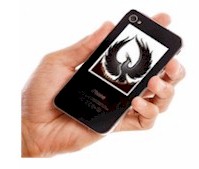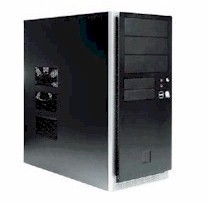|
|
DSC Tech Library
Predictive Dialer
 This section of our technical library presents information and documentation relating to Predictive Dialers and Auto Dialer software and products.
The PACER and Wizard phone systems are PC based call center phone systems that are recognized as premier inbound and outbound computer telephony systems. Features such as automatic call distribution (ACD), interactive voice response (IVR) and call recording have added a new dimension to the predictive dialer and auto dialer capabilities of these systems. These computer based dialing systems can perform various types of auto dialing campaigns simultaneously. These types include Predictive Dialing, Progressive Dialing, Preview Dialing and Dial on Demand.
This section of our technical library presents information and documentation relating to Predictive Dialers and Auto Dialer software and products.
The PACER and Wizard phone systems are PC based call center phone systems that are recognized as premier inbound and outbound computer telephony systems. Features such as automatic call distribution (ACD), interactive voice response (IVR) and call recording have added a new dimension to the predictive dialer and auto dialer capabilities of these systems. These computer based dialing systems can perform various types of auto dialing campaigns simultaneously. These types include Predictive Dialing, Progressive Dialing, Preview Dialing and Dial on Demand.
The Latest Metamorphosis Of The Predictive Dialer
BY CHRISTINE HOLLEY, INTERACTIVE INTELLIGENCE
The Software-Based Dialer
Spurred by call centers seeking more efficient ways to reach customers, predictive dialer
technology has undergone several amazing metamorphoses. The first was the shift from
legacy to client/server architecture, which ushered in a new software-based dialer
offering more robust functionality. The popularity of the software-based dialer has grown
rapidly while its stand-alone cousin, the legacy dialer, appears close to extinction. In
fact, many analysts predict that by 1999, virtually all predictive dialers will be based
on a software-centric solution.
Why such wide adoption of the software-based dialer? Because a software-based dialer
significantly leverages other call center resources on the network. For instance,
predictive dialers running as networkwide applications aren't tied to a physical location.
By running on multiple servers, many more agents can utilize predictive dialing
capabilities, hence agent productivity is increased.
Communications Server Technology
But client server architecture isn't the only factor affecting the use of predictive
dialers. A recent development in the computer-telephony industry is pushing the dialer
envelope even further. This development is known as the all-in-one communications server
or comm server. While still in its infancy, communications server technology is enabling
call centers to unify all interactions on a single server to fully leverage their
resources. Because communications server technology marks a dramatic architectural
departure from computer-telephony integration, its impact on predictive dialer technology
extends far beyond simple feature enhancements.
The power of the communications server lies in its all-in-one architecture.
Traditionally proprietary devices such as the PBX, ACD, IVR, voice mail, fax server, Web
server, CTI gateway and, yes, the predictive dialer, are all unified via a single
platform. No middleware is required to piece together these devices. No additional
resources are needed to run the system. With communications server technology, support and
maintenance is greatly simplified and costs go down.
The Communications Server Dialer
A predictive dialer running on communications server technology adds flexibility,
scalability, breadth of function and standardization to outbound interactions. Imagine
unlimited flexibility for call treatment, callback requests, agent routing of outbound
calls, and post-call wrap-up functions. Teleservices agencies that need to respond quickly
to client requests can easily change applications, develop new ones and provide virtually
unlimited call processing options to their outbound clients. For administrative staff in
stand-alone outbound centers, a separate PBX is no longer required. In addition, calls
requiring interactive voice response applications don't have to be switched to a separate
device. Since management tools such as customized reporting are completely open,
communications server dialers can also be easily integrated with third-party applications
at both the server and client levels.
In addition to outbound enhancements, communications server technology also provides
powerful blended capabilities. A unified system enables outbound calls to be queued with
inbound interactions if necessary. Thus, agents don't have to be moved between inbound and
outbound processing. Another advantage of a unified system is the application of priority
levels to a blended environment. For instance, if the tolerance level of outbound calls is
low, meaning the outbound called party will not wait for an agent, then a very high
priority can be placed on the outbound interaction. Thus, if there is an outbound call as
well as an inbound call in a queue, the outbound call will be directed to the agent first.
Like priority levels, the application of skill levels is also enhanced by a unified
system. Let's say on a particular campaign, one agent is better than another at closing a
sale or making a collection. Perhaps on an inbound call, another agent is better. On a
unified system, the predictive dialer can determine the best call for each scenario and
route the outbound and inbound calls as necessary. This maximizes agent skill utilization
while increasing revenue generation.
Managing a blended environment is perhaps the biggest challenge for call center
supervisors. But with a unified system, real-time viewing of outbound and inbound queues
is a reality. A supervisor can view calls in queue and determine if the dialer should be
manually slowed down. A supervisor can even intervene by selecting calls from the queue
for processing.
A unified system also offers the advantage of a single administrative interface for
both inbound and outbound interactions. Separate scripts and screen pops for inbound and
outbound calls are all defined in a single administrative interface. From this
administrative console, users and trunk lines can be added, agent skills can be defined,
reporting formats can be changed, outbound parameters can be modified, etc. These
administrative functions can even be accomplished in a multisite implementation across a
WAN.
The Interaction Center
Communications server technology - and with it, the communications server dialer - is a
key component of today's total customer care strategy. As call centers are increasingly
expected to deal with myriad interactions, ranging from traditional modes of communication
like calls and faxes, to newer forms such as e-mail, digital pages and Web transactions,
the name "interaction center" seems a more suitable title. This new role for
call centers implies significant interaction management issues. A component-type mentality
may work when you're dealing with only one or two communication media, but as these
different forms of communication multiply, interaction management across separate systems
becomes virtually impossible. You should expect nothing less than total unification of
your predictive dialer, IVR, ACD, Web services, etc.
So how would a unified system work utilizing predictive dialer functionality? Suppose
you're running an interaction center providing services for time-share customers. A
customer finds your Web site and requests a chat with an agent. The agent is able to lead
the customer to a form, which logs time-share specifications required by a given customer.
That customer is automatically put on a waiting list until a time-share matching the
customer's specifications becomes available. When the requested time-share shows
availability, a predictive dialer immediately notifies the customer and connects the
customer with the original agent using stored ACD parameters.
As this example illustrates, predictive dialing is no longer a simple telemarketing or
collections tool. Communications server technology has made possible a variety of
sophisticated predictive dialing applications. If call centers expect to evolve into fully
formed interaction centers, this latest metamorphosis of the predictive dialer must too be
embraced.
Auto Dialer
DSC offers an affordable entry level auto dialer phone system that utilizes analog phone lines. This 4 line auto dialing system includes our WIZARD dialer and softphone or comes optionally with our comprehensive software development toolkit.
Predictive dialing campaigns can be developed using our WIZARD software setup utility or we can provide you with a custom predictive dialer campaign. These applications can be easily ported to our digital T1 phone system (PACER) when your call volume requires a larger system.
Phone dialing campaigns can be quickly developed that call numbers from a phone list and when contact is made with an individual, the call can be routed to your online agent or to a work from home employee. If an answering machine is detected, a different message could be left on the machine.
This entry level auto dialer can be easily expanded by adding additional agent lines and software to support a small call center operation including complete CRM applications.
DSC provides voice broadcast software including our wizard development tool for creating voice broadcasting applications. This wizard guides you through each step when defining your outbound phone applications. Comprehensive dialing applications can be developed quickly. Simply record your phone prompts and fill in the blanks.
|
|
|


 This section of our technical library presents information and documentation relating to Predictive Dialers and Auto Dialer software and products.
The PACER and Wizard phone systems are PC based call center phone systems that are recognized as premier inbound and outbound computer telephony systems. Features such as automatic call distribution (ACD), interactive voice response (IVR) and call recording have added a new dimension to the predictive dialer and auto dialer capabilities of these systems. These computer based dialing systems can perform various types of auto dialing campaigns simultaneously. These types include Predictive Dialing, Progressive Dialing, Preview Dialing and Dial on Demand.
This section of our technical library presents information and documentation relating to Predictive Dialers and Auto Dialer software and products.
The PACER and Wizard phone systems are PC based call center phone systems that are recognized as premier inbound and outbound computer telephony systems. Features such as automatic call distribution (ACD), interactive voice response (IVR) and call recording have added a new dimension to the predictive dialer and auto dialer capabilities of these systems. These computer based dialing systems can perform various types of auto dialing campaigns simultaneously. These types include Predictive Dialing, Progressive Dialing, Preview Dialing and Dial on Demand.
